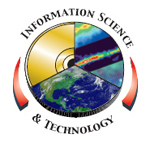
Please Note: The content on this page is not maintained after the colloquium event is completed. As such, some links may no longer be functional.
Michael Seablom
ESTO Investments in Advanced Information Technology - Opportunities and Future Directions
Wednesday, December 18, 2013
Building 3 Auditorium - 11:00 AM
(Coffee and cookies at 10:30 AM)
Information technology (IT) has been a key enabler of NASA's scientific research for decades, however it has lacked a consistent investment strategy. Since the beginning of the first internet boom the Agency has generally followed US corporate strategies in determining IT funding - aggressively in the early years, when relatively generous funding was made available for high-risk projects, to a more defensive, conservative approach most recently. Much of this trend can be traced to studies performed over the past decade that indicated many businesses overestimated the strategic value of IT investments, and the resulting belief that IT should simply be treated as a commodity. However there is unmistakable evidence that the real value of IT investments lies not in the technology alone but in the innovations in business processes they enable. For NASA's Science Mission Directorate (SMD) this means that IT investments must be carefully managed and closely linked to scientific and mission goals.
The Agency established the Earth Science Technology Office (ESTO) in 1998 to manage investments in both information and instrument technology and to ensure proper alignment with its mission requirements. This presentation will discuss how ESTO establishes low- to mid-TRL IT requirements and will showcase some of the exciting innovations that have resulted from projects funded by ESTO's Advanced Information Systems Technology program. The presentation will also discuss future opportunities for information technologists.
Michael Seablom has served as program manager for ESTO's Advanced Information Systems Technology program for the past three years. During his 27-year tenure at NASA field centers and in the private sector he has led numerous cutting-edge information technology projects involving high-performance computing, sensor webs concepts for future DoD and NASA architectures, and software engineering for science algorithms. Previously he has served as the head of the GSFC Software Integration & Visualization Office and as the head of the Science Data Systems Branch, where he had the responsibility for providing a broad array of information technology services to the Earth Sciences Division in the areas of software engineering for high performance numerical modeling applications, scientific visualizations, observing systems simulation support, and education and public outreach. He is the recipient of the 2003 GSFC Information Systems Division Technology Leadership Award, the 2004 GSFC Goddard Outstanding Leadership Award, and the 2010 NASA CIO Excellence in Innovation Award. He holds degrees in Meteorology from Florida State University and Purdue University, and an MBA in Management of Technology from Georgia Tech.
IS&T Colloquium Committee Host: John Donohue
Upon request: 301-286-7040
